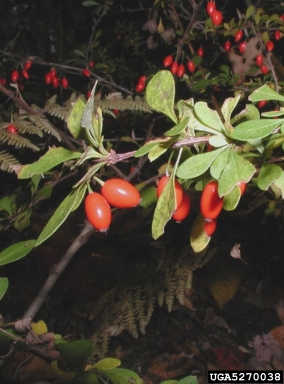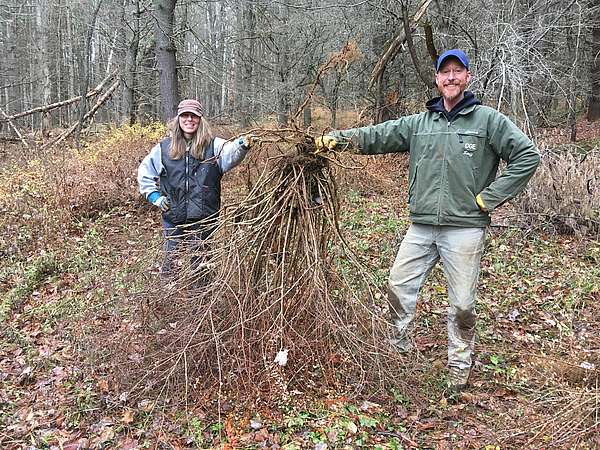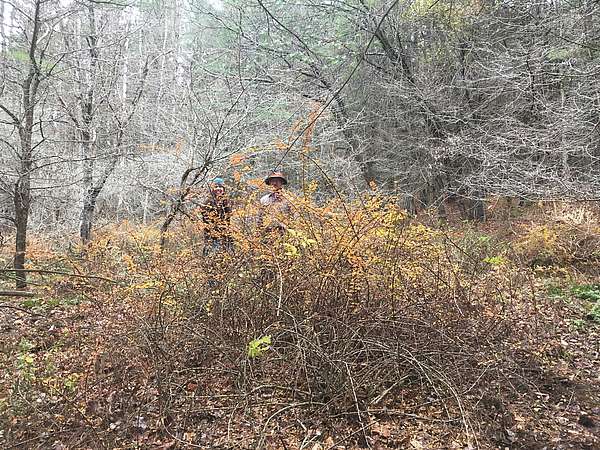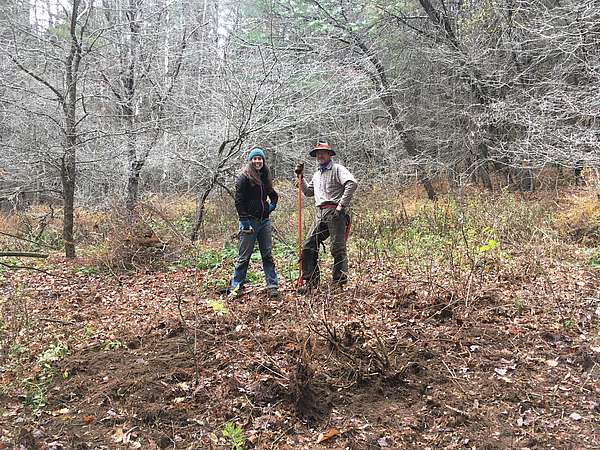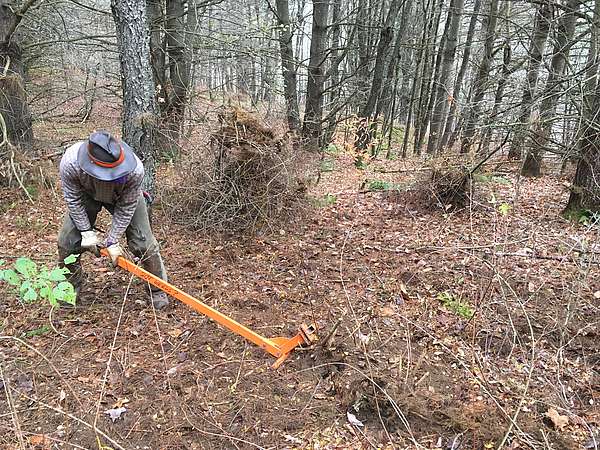A prickly pest is invading Cady Hill Forest: Japanese barberry.
Barberry is a non-native, invasive plant that looks pretty in landscaping around homes and yards. But it wreaks havoc when it escapes into natural areas, posing a threat to forest health, wildlife, and human health and safety.
Birds and other animals eat barberry’s bright red berries, carrying the seeds into shrublands and forests. Once established, barberry can multiply and spread through seeds and stem and root sprouts, quickly colonizing an area. It can grow so thickly in woodlands that few native shrub and tree seedlings or herbaceous plants survive. Barberry infestations can lead to increases in rates of Lyme disease. Ticks like to hang out on the tips of shrubs, waiting for mammals to pass by. Mice populations — an alternate host for Lyme disease — thrive in the thorny Barberry stands.
With assistance from Stowe Land Trust, the Stowe Conservation Commission, which is responsible for overseeing the management of Cady Hill Forest, is taking a stand against barberry on the property.
The short-term goal is to stop the infestation from spreading farther into the forest. The affected area is along the powerline corridor that parallels Charlie’s Trail along the eastern part of the property.
After Stowe Land Trust’s Conservation Program Manager, Kristen Sharpless, inventoried and mapped the current extent and severity of the infestation in 2015, the Commission decided to hire a contractor to start the work of keeping the plant at bay. The Town of Stowe hired Mike Bald of Got Weeds?to start hand-pulling barberry on the uphill side of Charlie’s Trail last fall where the plant is starting to spread into the interior forest on the property. After pulling nearly 3,000 plants in 2015, Bald was brought back again this fall to continue control work. He and volunteers, who helped out with efforts at a November 11th work day organized by Stowe Land Trust, pulled an additional 1,500+ plants.
After two seasons of control work in the treatment area, Bald’s assessment is that efforts have had a significant impact on the barberry infestation.
Regular visitors have noticed a positive difference as well. However, the work is not yet complete. The Conservation Commission will assess the status of the infestation next spring and make a plan for next steps.
How can I help?
- Learn to identifyJapanese barberry and other invasive plants.
- Look for seedlings and small plants whenever you are out on the trails. Pull them up, being sure to get all the roots. Hang plants in tree branches to prevent re-rooting.
- Volunteer for an invasive plant work day. Check Stowe Land Trust’s website for upcoming events or join our email list to learn about volunteer opportunities.
- Know the plants around your home and learn whether you have any non-native, invasive plants like barberry growing in your garden beds or around your yard. Send a photo or bring a sample to Stowe Land Trust if you aren’t sure.
- Replace invasive plants in your gardens and yard with native ones.Check out these beautiful, native alternatives to invasive plants like barberry.
